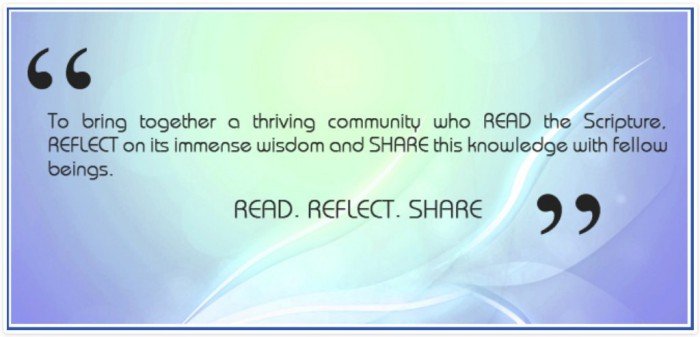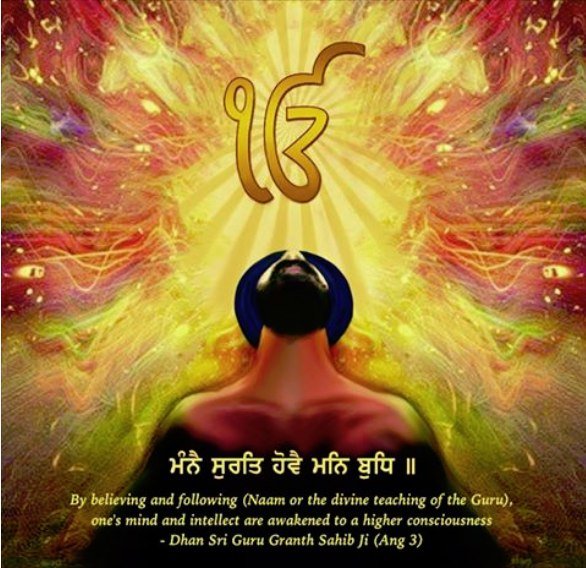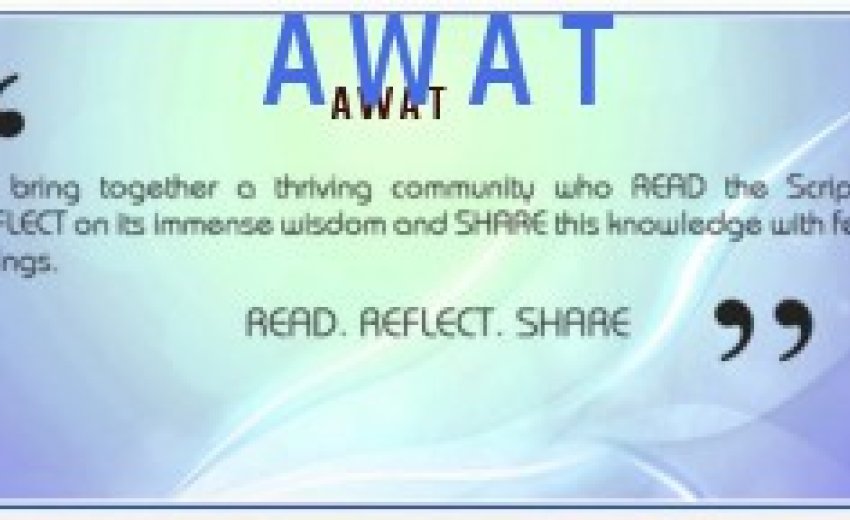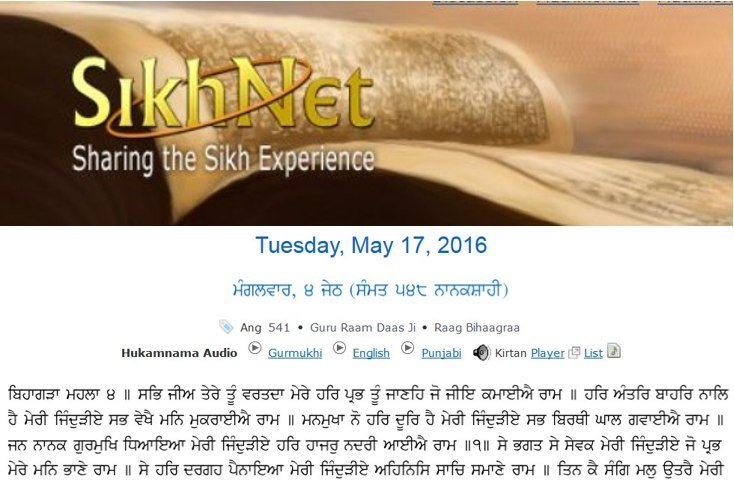AWAT: The Terrible Two's Again?
I.J. Singh
I seem to have morphed into a celebrant of the terrible twos. Yes, two years of age signifies a critical time in development of humans, ideas and institutions. That's when two-year olds start acting up.
My attention to this started when my granddaughter turned two a few years ago; a bit later I ruminated about the portal Sikhchic.com. Then just weeks ago Khojgurbani claimed my attention; it's a place for parsing Gurbani on the Internet and attracts participants worldwide. It is a live program; listeners engage in discussion; the number of participants remains limited.

Today I take note of a very different Internet portal, India based, that introduces us every day to a new word from Gurbani, but then it goes on to parse it by placing it in context of the complete line and the whole hymn in which it is found. This becomes not a simple translation of one word but an introduction to how words in Gurbani carry ideas. This is then ably parsed and dissected: the idea, its roots, derivation and applications are explored as well as its larger applied meaning and significance. This brief exposition thus becomes critical to learning the message of Gurbani.

The site is artfully labeled A WORD A THOUGHT, handily abbreviated to the moniker AWAT. How appropriate. It came into existence on June 30, 2014 and already has readers in 40 countries. I have been a fan ever since it was born. I can't think of a more painless way to delve into the lexicon and magic of the Guru Granth Sahib.
I have become addicted to being greeted by AWAT every morning, along with the Hukumnama from Sikhnet. I assure you there is no better or more welcome way.
We know that many languages are represented in the Guru Granth Sahib. Some are of Indic origin like Punjabi, Hindi, Marathi, Braj and Sanskrit, their mother lode. Others come from Middle-Eastern roots, such as Farsi and Arabic. I would posit that if Judeo-Christian writings had been available at the time of the Gurus, some would have found inclusion and commentary in the Guru Granth Sahib.
Now for what AWAT does.
We can easily relate to the brief elucidation of the line and hymn from Gurbani but I assure you the word by word translation, too, is hugely significant. The two ideas together make for something more critical and significantly more meaningful than just being an exercise in vocabulary building. Both are critically needed.
Think with me a moment.
True that Sikhi emerged from Punjab where Punjabi is the language of the people. But the contributors to the Guru Granth are many: seven of the ten Guru-founders of the faith; 15 bards and saints of the time, some from Islam, others who came with Hindu antecedents; many belonged to different cultural streams of the Indian Subcontinent; some came from low castes that, in Hindu traditional practice, would not ever sit together, break bread together or share ideas on religious or philosophic matters - never would they ever join together in the same worship service in the same temple.
Sikhi collated their writings and put them on the same or adjoining pages of the same holy book, the Guru Granth Sahib. This initiative was, for the India of 500 years ago, an utterly revolutionary idea, and remains equally superbly relevant today.
But these varied writers used different languages, each with many nuances in meaning and interpretation. A Sikh perusing the Guru Granth has to keep this in mind.
And now let's look briefly at our relationship with the Punjabi language today.
Guru Nanak founded the faith (Sikhi). But now, over 500 years later, Sikhs are no longer limited to Punjab or the Indian Subcontinent; in fact, there is no country in this wide world where Sikhs are not found. A paramount question is what has happened to our relationship with Punjabi language in the meantime?
Time and circumstance have reduced Punjabi to a largely conversational language, excellent for social banter. Even for Punjabis, it is no longer the medium that drives our professional life. This is even more true of the post World War II generation of Sikhs.
Ergo, most Sikhs today rarely pick up a book of poetry, history or philosophy in Punjabi.
Sikhs are now found all over the globe and the Sikh community also has a growing presence of converts coming to us from different ethnicities, cultures and languages. Obviously, Sikhs, the world over, have to come to terms with the many splendored lexicon of Gurbani.
But we have become abecedarians of languages, be they Indic, like Punjabi, or even English. Our relationship with Punjabi has become mostly transactional, for familial and some social interaction. Effectively we have become regressively under-educated in the languages of the Guru Granth Sahib, including Punjabi.
I have to wonder if Punjabi is still the norma loquendi of the people of Punjab.
Any Sikh, who is duty bound to peruse and understand the "Living Word" in the Guru Granth Sahib needs to navigate not only these languages but the scores of their regional variations that abound. We need to understand the language if cogitation, dialogue, discussion - vitchaar - is to become the central idea and driving force of our reading the Guru Granth. Quite obviously there is no alternative. Keep in mind the dictum from Gurbani: "Dithay mukt na havayee jitcher sabd na karaay vitchar" - that liberation does not come from the vision of the Guru but from thoughtful reflection on the message.

The format of AWAT (A Word A Thought) is beautiful in its simplicity. One word from a hymn in the Guru Granth Sahib is highlighted every morning. It is literally translated, as in any decently comprehensive dictionary, along with its many shades of meaning. Then the place of this in the entire line and the hymn is explored. This is a critically essential step; the context is all important, only then can it be correctly understood. Keep in mind that we are parsing inspired and inspiring poetry that to Sikhs is divine, and where, at times, words are truncated or stretched to fit the rigors of poesy.
Translation from one language to another is not a simple matter, particularly when the text was written centuries ago in a different cultural context. Usage changes words and their application over time. The ability to seamlessly move back and forth between cultures, languages and times is difficult and rare. To capture elegance, grace and precision in one language and transfer it to another is a miracle, found rarely and only in grace.
Sometimes the rendering might appear too literal or stilted. Despite this caveat it remains a very useful and important initiative. The mind of a poet is not so easy to grasp or capture, and hardly ever, entirely. But it is the exercise that really matters.
For AWAT I wish for a more powerful systematic mechanism to foster an increase in feedback from readers. A mini-discussion even on and around a single word can enlighten; Gurbani tells us that (Ek akhar har munn basat Nanak hoat nihal.)
I must salute from my heart the dedicated team of people behind this awesome venture. I am assured that there is a team around the world that makes the magic possible every day. Surely, without a dedicated team the daily miracle of a new word and associated idea - a theme from Gurbani for each day is not possible. Ergo, despite their determined reluctance to step out of the shadows and be publicly acknowledged, I must provide you the only two names that I know: Jaswant Singh, an academic scholar (he has co-authored a recent book titled, Guru Granth Sahib: Its Language & Grammar, and Baljeet Kaur. A project of such timeliness, significance and magnitude deserves kudos.
Do I ever differ with the translation or explanation that is offered? You bet I do. But that is good and useful. Playing with words is a pleasure that is also educational. That's the only way forward on the never-ending path towards understanding. Remember that it is through discussion and debate that we sharpen our focus, define our goals and hone our skills. Remember also that the journey is the destination. Human developmental neuroscience tells us that two-years old is an important time for finding and feeling the energetic self and its possibilities. This is an age that promises rapidly awesome transformational growth.
A hearty welcome to AWAT and a long productive path with us all!
Those who wish to receive these gems of Gurbani from AWAT, can subscribe here.
[email protected]
May 15, 2016

